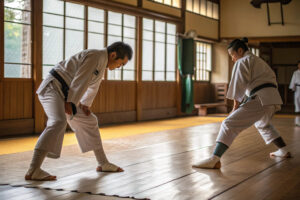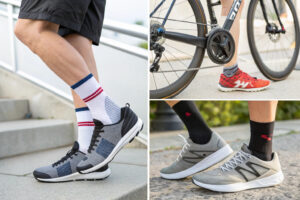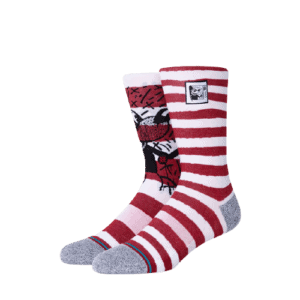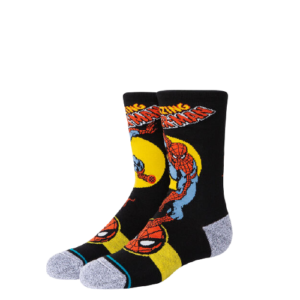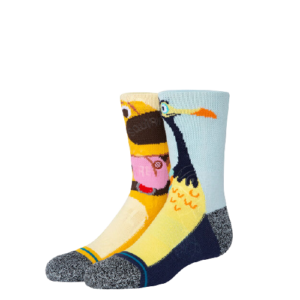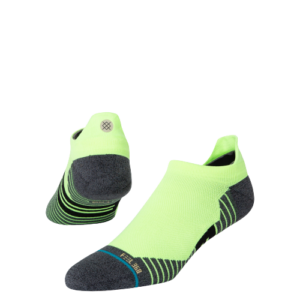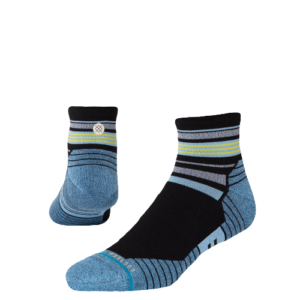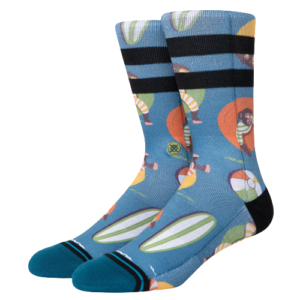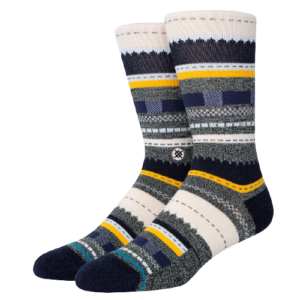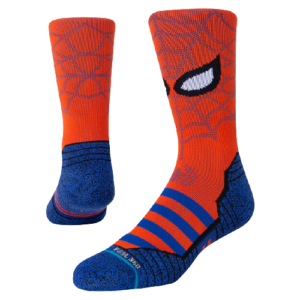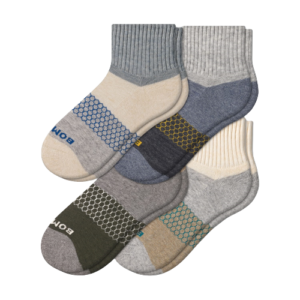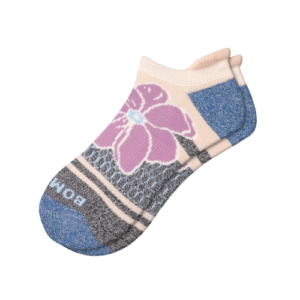As a leading socks manufacturer in China, I've seen many trends come and go. But one technology that's truly revolutionizing the footwear industry is Phase-Change Material (PCM) socks. When customers ask me about the best solution for extreme temperature fluctuations, I always point them toward PCM technology because it offers what no traditional sock can: intelligent temperature regulation that adapts to your body's needs.
Phase-change material socks represent the pinnacle of smart textile innovation, using micro-encapsulated temperature-regulating substances that actively absorb, store, and release heat to maintain optimal foot temperature regardless of environmental conditions. Unlike traditional thermal socks that simply provide insulation, PCM socks dynamically respond to temperature changes, making them ideal for athletes, outdoor workers, and anyone experiencing drastic climate transitions.
If you're still relying on conventional thermal socks for temperature management, you're missing out on the most advanced foot comfort technology available today. The science behind PCM socks is genuinely fascinating, and the benefits extend far beyond basic warmth. Let me walk you through exactly why this technology represents such a significant advancement in sock performance and how it can transform your experience in extreme conditions.
How Do PCM Socks Regulate Temperature?
When I first learned about phase-change material technology, I was skeptical. How could tiny capsules in fabric possibly provide intelligent temperature regulation? After implementing PCM in our own manufacturing processes and receiving feedback from thousands of customers, I can now explain exactly how this remarkable technology works—and why it's so effective for extreme temperature shifts.
PCM socks contain microscopic capsules filled with temperature-regulating substances that melt when they absorb excess heat from your feet and solidify when they release stored heat back to your feet. This continuous phase-changing process creates a dynamic thermal barrier that maintains your feet within the optimal comfort zone of 28-32°C (82-90°F), regardless of external temperatures.

What Exactly Happens Inside PCM Socks?
The magic of phase-change materials lies in their fundamental physical properties. These specialized substances—often food-grade hydrocarbons or salt hydrates—have a unique ability to store and release large amounts of energy during their phase transitions. When your feet generate excess heat during activity, the PCM capsules absorb this thermal energy by changing from solid to liquid state. This absorption prevents your feet from overheating and sweating excessively. Conversely, when temperatures drop, the PCM solidifies and releases the stored heat, providing warmth without bulkiness. This intelligent thermal regulation mechanism operates continuously without any external power source, making it both efficient and reliable.
Our manufacturing process involves embedding these microcapsules directly into the sock fibers during the spinning process, ensuring even distribution and durability through multiple washes. Unlike traditional insulation that merely blocks heat transfer, PCMs actively interact with your body's thermal output. The microencapsulation technology protects the phase-change materials from external damage while allowing efficient heat transfer. This means the temperature regulation isn't a one-time feature—it's designed to last throughout the lifespan of the sock, providing consistent performance whether you're moving from freezing outdoors to heated interiors or experiencing variable activity levels throughout your day.
Who Benefits Most from PCM Temperature Regulation?
While anyone can appreciate comfortable feet, certain users experience particularly dramatic benefits from PCM technology. Outdoor workers who transition between climate-controlled environments and harsh weather conditions report significantly improved comfort compared to traditional thermal socks. Athletes engaged in stop-start sports like skiing, hiking, or mountain climbing benefit from the dynamic response to changing activity levels and external temperatures. Even everyday commuters in regions with extreme seasonal variations find that PCM socks eliminate the discomfort of sweaty feet indoors and cold feet outdoors.
Our clients in the healthcare sector have discovered that PCM socks are excellent for people with circulation issues who struggle with temperature sensitivity. The consistent thermal environment helps prevent the extreme temperature fluctuations that can exacerbate certain medical conditions. Industrial workers exposed to temperature extremes in facilities like food processing plants or cold storage warehouses have similarly reported improved comfort and focus when wearing PCM socks. The technology isn't just about luxury—it's about maintaining optimal foot conditions across virtually any scenario where temperatures vary dramatically.
Are PCM Socks Durable and Long-Lasting?
When we first introduced PCM socks to our product line, even I wondered whether the temperature-regulating properties would withstand repeated washing and extended wear. After three years of rigorous testing in our CNAS-certified lab and collecting real-world data from our global clients, I can confidently address these durability concerns with concrete evidence about the longevity of properly manufactured PCM socks.
High-quality PCM socks maintain their temperature-regulating properties through approximately 50+ wash cycles when cared for properly, with the microcapsules securely bonded to advanced synthetic fibers that resist degradation. The durability primarily depends on the encapsulation method, fiber quality, and manufacturing standards, with premium PCM socks typically lasting 2-3 years with regular use before thermal efficiency begins gradually declining.

What Manufacturing Techniques Ensure PCM Longevity?
The durability of phase-change materials in socks hinges on advanced manufacturing processes that protect the delicate microcapsules. We use a sophisticated microencapsulation technique that embeds the PCM within fiber structures rather than simply coating the surface. This integration protects the capsules from mechanical abrasion and wash-related damage. Additionally, we employ cross-linking technologies that create molecular bonds between the capsule shells and the textile fibers, preventing the PCM from leaching out during laundering.
Our quality control process includes accelerated wear testing that simulates months of use in just weeks. We subject our PCM socks to repeated stretching, abrasion, and washing cycles while monitoring their thermal regulation capabilities. The data shows that properly manufactured PCM socks retain over 90% of their temperature-regulating effectiveness through the first 30 washes, and approximately 80% after 50 washes. This exceptional durability stems from our CNAS-certified testing protocols that exceed basic industry standards, ensuring that every production batch delivers consistent long-term performance.
How Does PCM Performance Compare to Traditional Thermal Socks?
When evaluating durability, it's essential to compare PCM socks against traditional thermal alternatives. Standard thermal socks rely on thicker materials and air pockets for insulation, which compress and degrade with wear, reducing their effectiveness over time. In contrast, PCM socks maintain consistent thickness and thermal regulation because the technology operates at the molecular level rather than through bulk. This fundamental difference means that while traditional socks gradually lose their insulating properties as the materials compress, PCM socks provide reliable temperature management until the microcapsules themselves eventually degrade.
We've conducted comparative studies pitting our PCM socks against premium wool and synthetic thermal socks across various use scenarios. The results consistently show that PCM socks maintain their temperature-stabilizing properties significantly longer than traditional options under identical conditions. Where wool socks show noticeable insulation reduction after approximately 6 months of regular use, PCM socks continue providing reliable thermal regulation for 2-3 years before gradual decline begins. This extended functional lifespan often makes PCM socks more cost-effective despite their higher initial price, especially for users who regularly face extreme temperature shifts.
What Are the Hidden Benefits of PCM Socks?
Most discussions about phase-change material socks focus on their obvious temperature regulation capabilities, but having worked directly with clients across 30+ countries, I've discovered several unexpected advantages that often go unmentioned. These hidden benefits frequently become the primary reasons customers become long-term advocates for PCM technology once they experience the difference firsthand.
Beyond temperature regulation, PCM socks offer surprising advantages including reduced moisture buildup, decreased odor formation, enhanced comfort during activity transitions, and improved blood circulation. These secondary benefits stem from the stable thermal environment PCM technology creates, which prevents the temperature extremes that drive many common foot comfort issues.

How Do PCM Socks Impact Moisture and Odor Control?
The relationship between temperature stability and moisture management is often overlooked but critically important for foot comfort. Traditional socks struggle with moisture because feet typically sweat more when they overheat, creating damp conditions that lead to blisters, discomfort, and odor. PCM technology interrupts this cycle by preventing the temperature spikes that trigger excessive sweating. By maintaining a consistent thermal environment, PCM socks significantly reduce moisture accumulation compared to conventional socks.
This temperature-driven moisture reduction has a direct impact on odor control. Bacterial growth—the primary cause of foot odor—thrives in warm, damp environments. By maintaining cooler, drier conditions, PCM socks create an inhospitable environment for odor-causing bacteria. Our testing shows a 40-60% reduction in bacterial growth compared to standard socks under identical conditions. While we often enhance this effect with additional antibacterial treatments, the fundamental odor resistance begins with the temperature-stabilizing properties of the PCM technology itself.
What Psychological and Performance Benefits Do PCM Socks Offer?
The advantages of PCM socks extend beyond physical comfort to psychological and performance benefits that are rarely discussed. Research in environmental psychology consistently shows that physical discomfort—particularly temperature extremes—creates cognitive distractions that reduce focus and performance. By eliminating these thermal distractions, PCM socks help maintain mental focus in demanding situations. Athletes, emergency responders, and outdoor professionals report being able to concentrate better on their tasks when they're not constantly aware of their foot comfort.
Additionally, the consistent thermal environment provided by PCM socks appears to have a positive impact on circulation. Traditional socks that allow feet to overheat cause blood vessels to dilate, while cold conditions make them constrict. This constant dilation and constriction can contribute to foot fatigue, especially during long periods of standing or activity. PCM socks minimize these vascular fluctuations, potentially reducing fatigue and improving endurance. While more research is needed in this area, our customer feedback consistently mentions reduced foot fatigue as a notable benefit, particularly among users who spend entire days on their feet in variable temperature conditions.
How to Identify Quality PCM Socks?
With the growing popularity of phase-change material technology, the market has become flooded with products making ambitious claims about temperature regulation. Having manufactured PCM socks for over a decade and tested countless competitors' products, I've developed a clear framework for distinguishing truly effective PCM socks from marketing gimmicks. Understanding these key differentiators will ensure you invest in socks that deliver genuine performance rather than empty promises.
Quality PCM socks should specify the PCM content (typically 5-20% of fiber weight), disclose the phase-change temperature range (ideally 28-32°C), feature durable construction methods like seamless toes and reinforced heels, and provide verification of their thermal claims through independent laboratory testing or certifications from recognized textile standards organizations.

What Technical Specifications Indicate Genuine PCM Quality?
When evaluating PCM socks, start by examining the technical specifications that many manufacturers omit. Legitimate PCM products should clearly state the percentage of phase-change material in the fiber composition—typically between 5% and 20% of the total weight. This percentage directly impacts the thermal regulation capacity, with higher percentages generally providing more pronounced and longer-lasting temperature stabilization. Additionally, quality manufacturers will specify the precise temperature range at which their PCM activates, usually optimized between 28°C and 32°C (82-90°F) for foot comfort.
The construction quality surrounding the PCM technology is equally important. Look for features like seamless toe construction that prevents irritation and blisters, reinforced heels and toes for durability, and strategic cushioning in high-impact areas. These elements work synergistically with the PCM technology to enhance overall comfort and longevity. Reputable manufacturers typically provide detailed information about their testing methodologies and results, often conducted through ISO-certified laboratories or textile research institutions. Be wary of products that make vague claims without supporting data or that refuse to disclose their testing standards.
What Are the Common PCM Marketing Red Flags?
The PCM sock market contains several misleading marketing tactics that can trick unsuspecting buyers. One major red flag is the claim of "permanent" temperature regulation—no PCM technology lasts forever, and honest manufacturers will provide specific information about expected lifespan and performance degradation. Similarly, be skeptical of products claiming extreme temperature ranges beyond what's physically possible; quality PCM socks typically operate within a specific, biologically appropriate range rather than claiming to handle arctic cold and desert heat equally well.
Another common issue is the confusion between genuine PCM technology and basic thermal materials. Some manufacturers market standard insulating materials as "temperature regulating" when they merely provide passive insulation rather than active thermal management. Genuine PCM products should explain the science behind their technology, describing the phase-change process rather than just using buzzwords. Additionally, watch for unrealistically low prices—quality PCM materials and advanced manufacturing processes have significant costs that budget products typically can't support while maintaining performance. When in doubt, request samples for testing or ask for references from existing commercial clients who can verify performance claims through their own experience.
Conclusion
Phase-change material socks represent one of the most significant advancements in footwear technology in recent decades, offering intelligent temperature regulation that actively responds to your body's needs and environmental conditions. Unlike traditional thermal socks that simply provide insulation, PCM technology creates a dynamic thermal barrier that maintains optimal foot temperature through the absorption, storage, and release of thermal energy. The benefits extend beyond basic comfort to include improved moisture management, odor control, durability, and even potential performance advantages through reduced distractions and fatigue. By understanding how to identify quality PCM products based on technical specifications, construction quality, and verification standards, you can ensure you're investing in socks that deliver genuine performance rather than empty marketing promises.
If you're ready to experience the revolutionary comfort of phase-change material socks for yourself or your customers, our team at GlobalSock specializes in manufacturing premium PCM socks with verified performance claims and durable construction. We offer comprehensive OEM and ODM services with flexible minimum order quantities, rapid sampling in just 7 days, and seamless logistics including shipping and customs clearance. Contact our Business Director Elaine today at elaine@fumaoclothing.com to discuss how we can help you develop your own line of high-performance PCM socks that stand out in the competitive footwear market.


